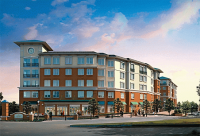New Jersey Future Blog
Uncovering the Real Need for Affordable Housing
September 20th, 2004 by Chris Sturm
- Some 40 percent of all households in New Jersey are low- or moderate-income households, meaning they earn less than 80 percent of the median gross income for their region.
- To decide which of these households qualifies as needing affordable housing, the state relies on two questions: 1) does the current housing have deficient plumbing or an incomplete kitchen; and 2) is it “crowded” (meaning more than one occupant per room) and built prior to 1940.
- Such narrow criteria disqualify those living with leaking roofs, no heat, and other substandard and unsafe conditions. Also excluded are families and wage earners who may “double up” into crowded living conditions in order to afford housing, but who then count as a single household with a combined income in excess of the low- or moderate-income threshold.
- A more honest measure of New Jersey’s need for affordable housing would count all low- and moderate-income households that must pay at least 35 percent of their gross income on housing costs, a group not considered today; and all crowded households, regardless of income.
NEW RULES FALL SHORT FOR AFFORDABLE HOUSING
October 15 marks the deadline for public comment on rules re-proposed by the state in August and intended to guide municipalities in providing affordable housing.
Although all New Jersey municipalities have a constitutional obligation to provide their share of such housing, it is in desperately short supply and overwhelmingly concentrated in a handful of communities, most of which are losing jobs.
The new rules, like the old, fail to take an honest measure of the state’s need as detailed above, even though the data to do so is readily available. At best, these rules really measure housing rehabilitation needs, rather than affordability. And while they purport to advance a “fair share” system of assigning affordable housing, the new rules will in fact exacerbate today’s concentrations of poverty by assigning the largest obligations to the municipalities already providing much more than their share of the region’s needs.
A new “growth share” idea re-introduced in these rules could help spur more affordable housing by requiring all new construction to also provide a fixed amount of affordable housing. Growth share also could help foster a more fair distribution of affordable housing, if the share could be adjusted upward or downward for each community, depending on how much affordable housing is already present in the community and how much developable land remains.
A truly effective affordable housing policy would measure the housing need accurately, would propose mechanisms for reversing the concentration of poverty and would deliver affordable housing in the places where there is currently an undersupply.
















